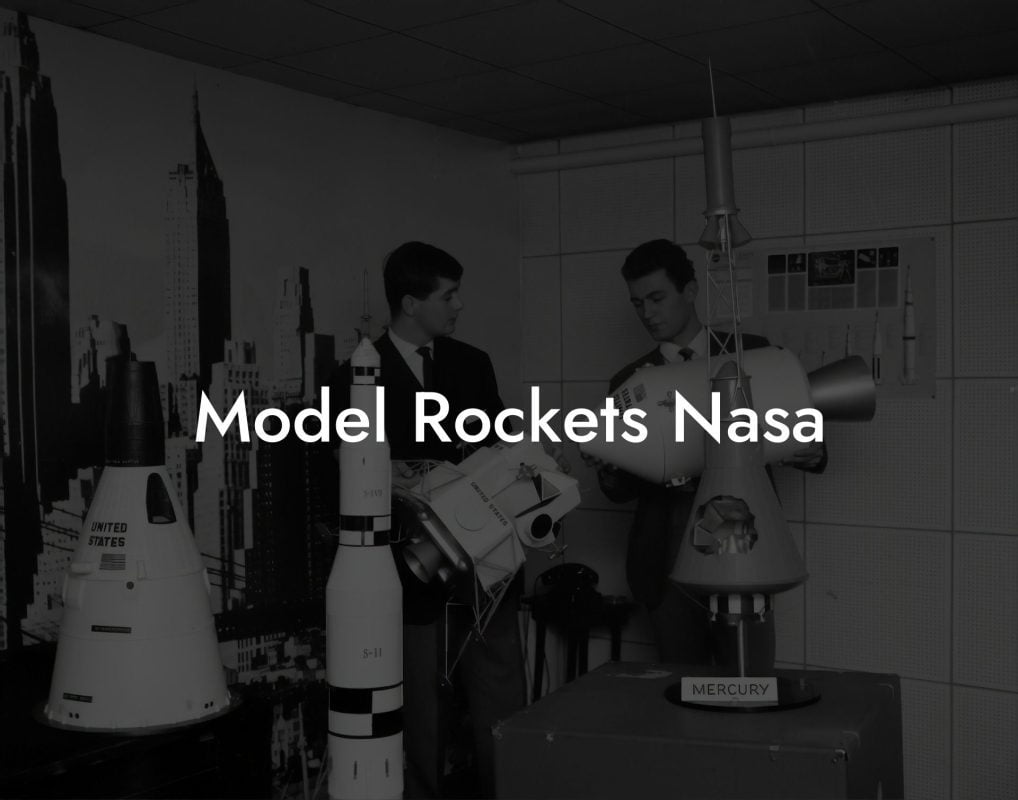Imagine the thrill of launching a model rocket into the sky, watching it soar to incredible heights, and feeling the rush of excitement as it returns to Earth. For many, model rockets evoke memories of childhood wonder and curiosity. But for enthusiasts of all ages, model rockets represent a fascinating intersection of science, technology, engineering, and mathematics (STEM) concepts, creativity, and adventure.
Quick Links to Useful Sections
- What Are V2 Model Rockets?
- The History of V2 Model Rockets
- Design and Construction of V2 Model Rockets
- Launching and Recovery of V2 Model Rockets
- V2 Model Rocket Kits and Accessories
- V2 Model Rocket Communities and Events
- Frequently Asked Questions About V2 Model Rockets
- Resources and Community Support: Your Next Steps
What Are V2 Model Rockets?
V2 model rockets are scale replicas of the German V-2 rocket, also known as the Aggregat 4, which was developed during World War II. The V-2 was the first long-range guided missile and the first vehicle to reach space. Today, V2 model rockets are popular among hobbyists and enthusiasts, offering a unique blend of historical significance, technical challenge, and thrilling performance.
V2 model rockets typically feature a sleek, cylindrical design, with a rounded nose cone and fins at the base. They can range in size from small, entry-level models to larger, more complex designs that mimic the original V-2's dimensions. Whether you're a seasoned model rocketeer or just starting out, building and launching a V2 model rocket can be an incredibly rewarding experience.
The History of V2 Model Rockets
The development of the V-2 rocket during World War II marked a significant milestone in the history of rocketry. The brainchild of German engineer Wernher von Braun, the V-2 was designed to deliver a payload of over 1 ton to a target over 300 miles away. Although the V-2 was used as a weapon, its technological innovations paved the way for modern space exploration.
In the post-war era, model rocketry emerged as a popular hobby, with enthusiasts around the world building and launching scale models of the V-2 and other rockets. Today, V2 model rockets continue to captivate hobbyists, inspiring a new generation of engineers, scientists, and explorers.
Looking For The Best Model Rocket Kits? You'll Love These:
Design and Construction of V2 Model Rockets
Building a V2 model rocket requires attention to detail, precision, and patience. The process typically involves designing and constructing the rocket's body, nose cone, fins, and recovery system. Depending on the level of complexity, V2 model rockets can feature advanced components, such as electronic ignition systems, altimeters, and GPS tracking devices.
Materials used in V2 model rocket construction vary, but commonly include balsa wood, plastic, fiberglass, and advanced composites. The choice of materials often depends on the desired level of realism, durability, and performance. Whether you're a beginner or an experienced model rocketeer, the process of designing and building a V2 model rocket offers a unique opportunity to develop your skills and knowledge.
Launching and Recovery of V2 Model Rockets
Launching a V2 model rocket is an exhilarating experience, requiring careful preparation, attention to safety protocols, and a deep understanding of the rocket's performance characteristics. Before launch, model rocketeers must ensure that their rocket is properly assembled, with all components functioning correctly.
Recovery systems, such as parachutes or streamers, are used to return the rocket to Earth safely, minimizing damage and allowing for reuse. The recovery phase provides valuable insights into the rocket's performance, helping model rocketeers refine their designs and improve future launches.
V2 Model Rocket Kits and Accessories
For those new to model rocketry, V2 model rocket kits offer a convenient and accessible way to get started. These kits typically include pre-cut body tubes, nose cones, fins, and recovery systems, along with detailed instructions and guidance. More experienced model rocketeers can also find a wide range of accessories, including advanced electronics, custom decals, and specialized tools.
Online forums, communities, and specialty stores provide valuable resources for model rocketeers, offering expert advice, tutorials, and product reviews. Whether you're looking to upgrade your current V2 model rocket or start a new project, the right kit and accessories can make all the difference.
V2 Model Rocket Communities and Events
The V2 model rocket community is a vibrant and active group, with enthusiasts from around the world sharing their passion for model rocketry. Online forums, social media groups, and local clubs provide opportunities for model rocketeers to connect, share knowledge, and showcase their creations.
Model rocket launches and competitions offer a thrilling way to experience the excitement of V2 model rockets firsthand. These events often feature a range of activities, including rocket building contests, flight demonstrations, and educational workshops. Whether you're a seasoned pro or just starting out, V2 model rocket communities and events offer a welcoming and inspiring environment to explore.
Frequently Asked Questions About V2 Model Rockets
Here are some frequently asked questions about V2 model rockets:
1. What is the typical size of a V2 model rocket?
V2 model rockets can range in size from small, entry-level models (around 10-15 inches tall) to larger, more complex designs that mimic the original V-2's dimensions (up to 6 feet tall).
2. What materials are used to build V2 model rockets?
Materials used in V2 model rocket construction vary, but commonly include balsa wood, plastic, fiberglass, and advanced composites.
3. How high can V2 model rockets fly?
The altitude reached by a V2 model rocket depends on factors such as the rocket's design, propulsion system, and weather conditions. Some V2 model rockets can reach altitudes of over 1,000 feet.
4. Are V2 model rockets safe?
When built and launched properly, V2 model rockets can be safe. However, it's essential to follow safety guidelines, use protective equipment, and ensure that the launch site is clear of obstacles and spectators.
5. Can I build a V2 model rocket from scratch?
Resources and Community Support: Your Next Steps
Ready to embark on your V2 model rocket journey? Here are some valuable resources to help you get started:
- National Association of Rocketry (NAR): A comprehensive resource for model rocketeers, offering guidance, tutorials, and community support.
- Model Rocketry Forum: An active online community where you can connect with fellow enthusiasts, ask questions, and share your experiences.
- V2 Model Rocket Kits and Accessories: Find a wide range of V2 model rocket kits, parts, and accessories from reputable suppliers and manufacturers.
Remember, building and launching a V2 model rocket is just the beginning of an exciting journey. Join the community, share your passion, and keep reaching for the stars!
Looking For The Best Model Rocket Kits? You'll Love These:
Useful Interruption: Dive deeper into the world of Model Rockets with our most popular sections. If there is anything you think is missing or anything you would love for us to write about, just give us a shout.
- Getting Started & Basics With Model Rockets
- Model Rocket Design, Build & Customization
- Model Rocket Propulsion & Engine Technology
- Model Rocket Launch Techniques & Recovery
- Model Rocket Advanced Rocketry & Innovations
- Model Rocket DIY and Customization
- Model Rocket Equipment Reviews & Digital Tools
- Community, Competitions & Education
- Model Rocket Troubleshooting & FAQs
- Model Rocket Bonus/Seasonal & Niche Topics
A group of model rocket enthusiasts gathered at a field for their weekly launch event. Among them was Dave, a seasoned builder known for pushing the limits of hobby rocketry. This time, he had outdone himself.
“Ladies and gentlemen,” Dave announced, dramatically pulling a cloth off his latest creation, “I present to you: The Kraken!”
The crowd gasped. This wasn’t just a model rocket, it was a monster. The thing stood 8 feet tall, had six clustered engines, and was covered in enough duct tape to qualify as a classified aerospace project.
“Dave,” muttered Steve, the cautious safety officer, “Have you, uh… done the math on this?”
“Math?” Dave scoffed. “I built it in my garage at 3 a.m. with parts from eBay. This is an art piece, Steve.”
The countdown began.
5…
4…
3…
2…
1…
The engines ignited with a BOOM, and The Kraken shot up… kind of. It immediately did a violent barrel roll, narrowly missing the spectators before skyrocketing at an angle that could only be described as “legally questionable.”
The crowd collectively ducked as The Kraken flew straight over the adjacent cornfield, where Old Man Jenkins, the grumpiest farmer in town, was minding his business.
KABOOM!
The rocket disappeared behind the barn. A moment later, a flaming piece of Estes igniter wire landed at Steve’s feet. The silence was deafening.
And then, an unmistakable sound echoed across the field.
Jenkins’ shotgun being cocked.
“DAVE!!!” Steve shouted. “RUN.”
And that was the day Dave invented the first-ever biologically powered rocket booster: pure adrenaline.
To this day, nobody knows where The Kraken landed, but legend has it, it still haunts the skies, terrifying unsuspecting drones and low-flying birds.















